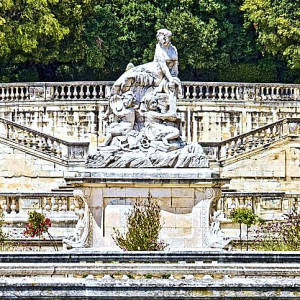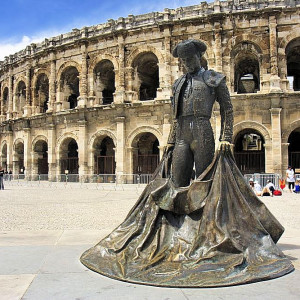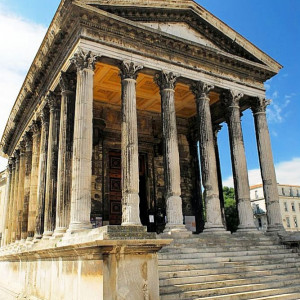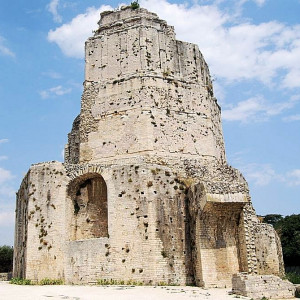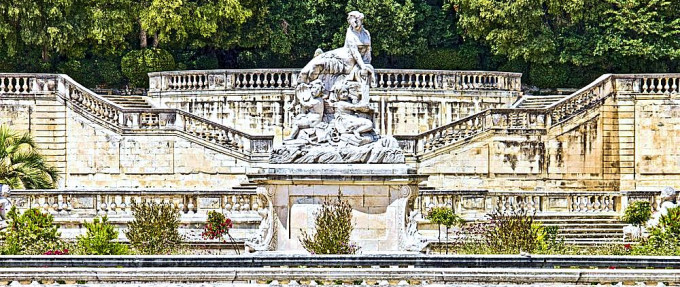
Nimes
The ancient capital of a Celtic tribe and situated on the Spanich-Italian trade route, Nimes first rose to prominence when the Romans reciprocated to the warm welcome given to them by the townspeople and showered them with the appropriate privileges. A monumental 5 mile long wall was built to encircle and protect the town followed soon after by a large amphitheater and then the Maison Carée. Water was brought into the city for its baths and fountains via the Pont du Gard aqueduct. As a result of the impressive Pont du Gard the wealthy citizens of the city were able to have water running freely into their homes – thus the city developed basins, sewerage, latrines and magnificent water parks. The many fountains in the city were a place for the village women to get water and do their washing and to get water from them for use in their homes.
Peace and prosperity reigned in Nimes until the fall of the Romans and then the city encountered a period of “troubles” at the hands of the Visigoths, followed by the Franks. Right through to the end of the 17th century, the town was involved in confilct.
During the 18th century, Nimes concentrated on building up a textile industry and became the birthplace of Denim (de Nimes), where it was used as a tent cloth as well as for hard wearing pants.
Today, Nimes has concentrated on reviving itself as a center for the arts and culture, focusing on restoring its ancient buildings and monuments and has established itself as a dynamic city.


